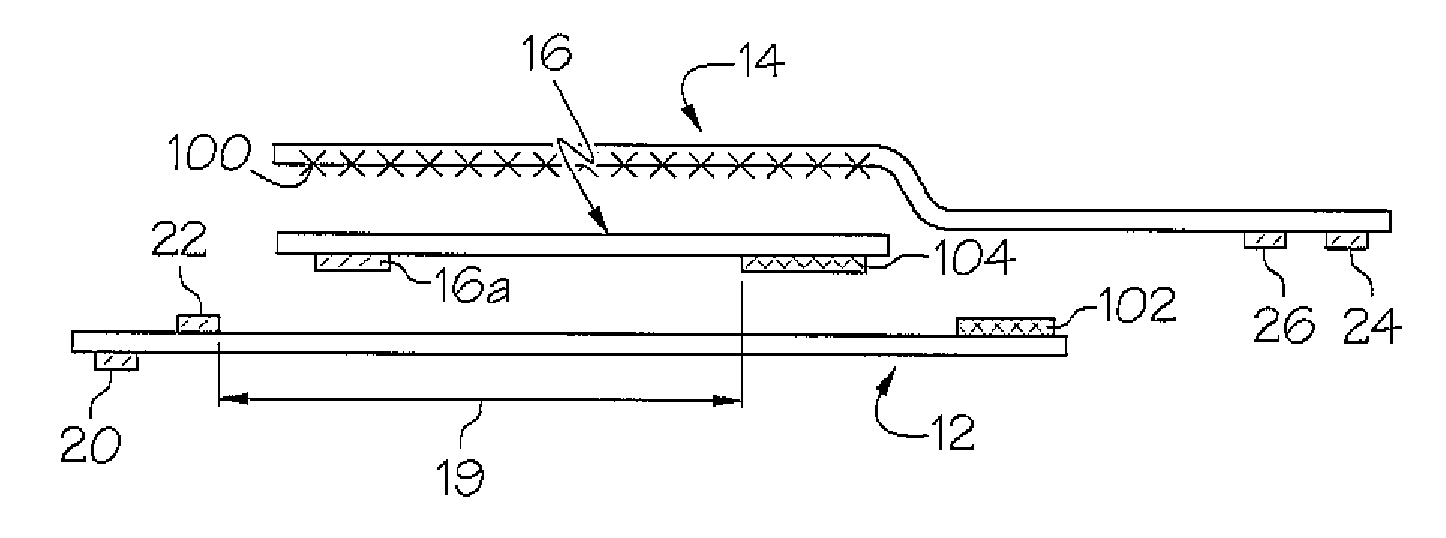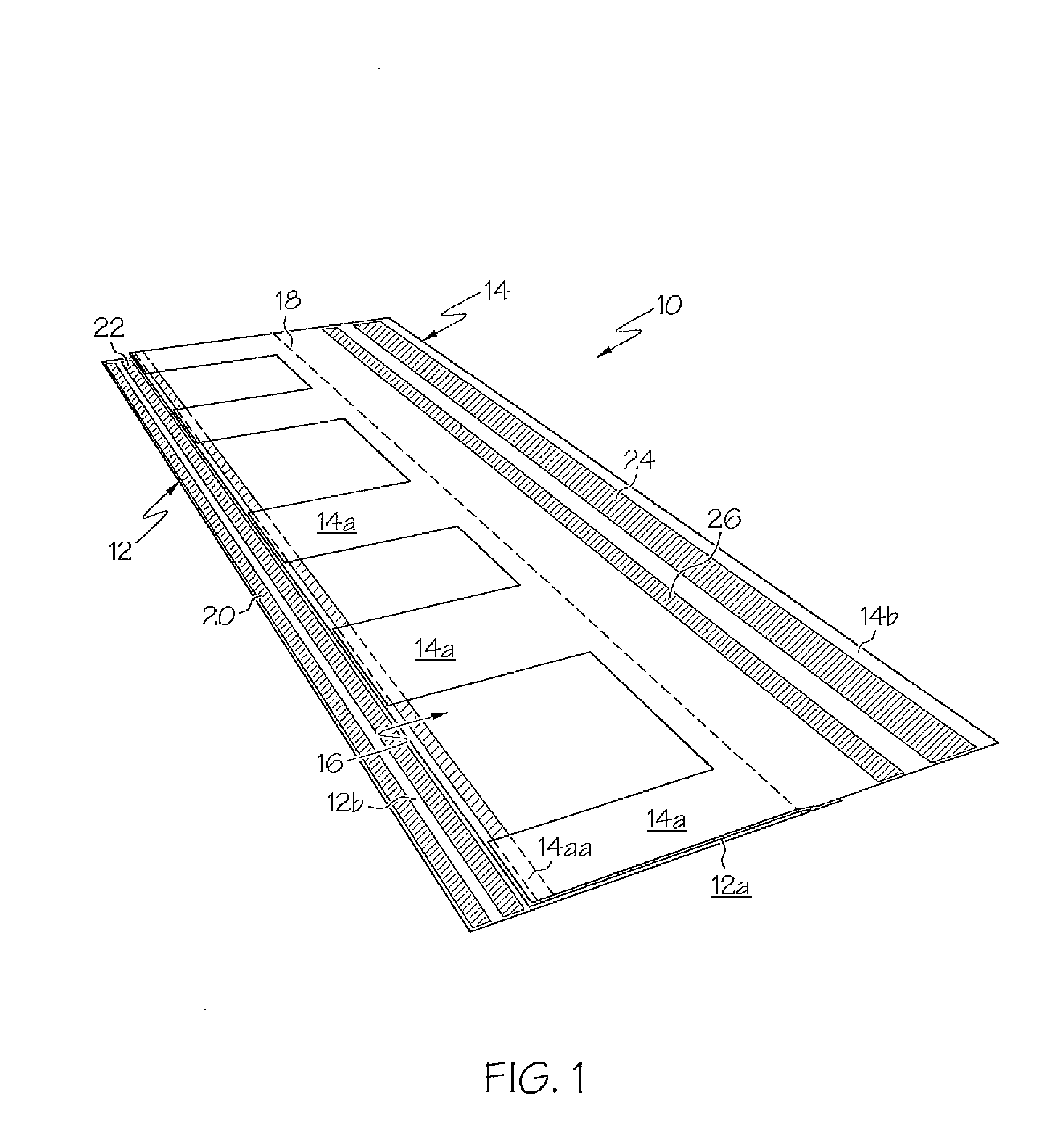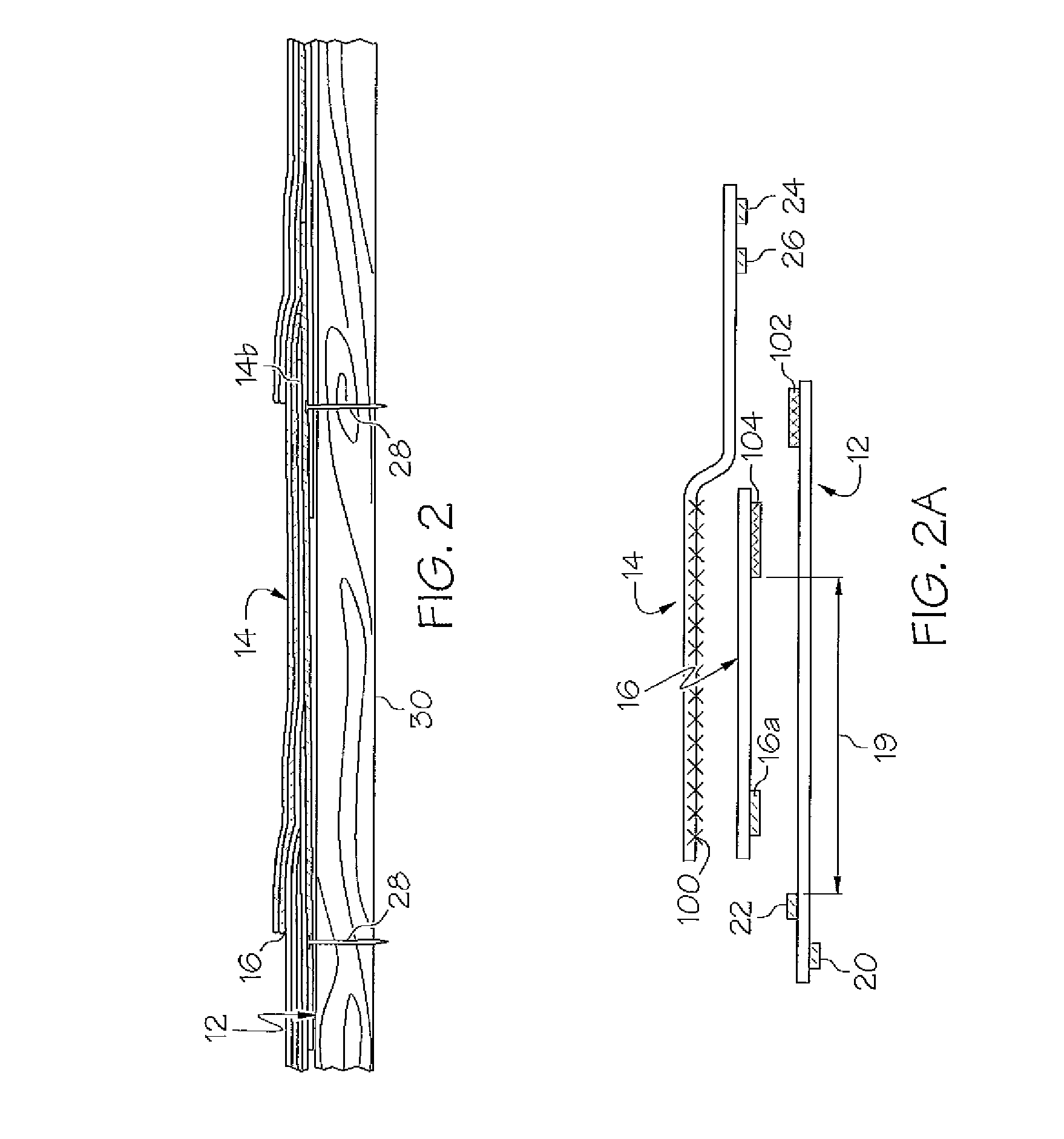Top down trap lock shingle system for roofs
a trap lock and roof technology, applied in the field of protective and aesthetic roofing shingles, to achieve the effect of preventing water intrusion and more structural durability
- Summary
- Abstract
- Description
- Claims
- Application Information
AI Technical Summary
Benefits of technology
Problems solved by technology
Method used
Image
Examples
Embodiment Construction
[0022]Referring now to the drawings and, in particular, FIG. 1 and FIG. 2, a shingle in accordance with the present invention is shown. The shingle 10 is made of asphalt, fiberglass, a composite material or any combination thereof and is comprised of three separate, relatively thin, somewhat flexible, layers formed in a laminate and glued together or heat sealed together as described herein. The shingle 10 is comprised of three layers of material 12, 14 and 16. Layer 12 is the base or bottom layer and has sections 12a and 12b which represent different areas on layer 12. Area 12b represents an attachment flange or hem that is used for fastening the shingle to a wooden roof. Layers 14 and 16 do not extend along the base over area 12b of the lower shingle area. Note that shingle area 12b section also has adhesive band 20 on its underside and an adhesive band 22 on its topside. Adhesive bands and dimensions in this embodiment are shown but not limited to just these areas. Other embodime...
PUM
 Login to View More
Login to View More Abstract
Description
Claims
Application Information
 Login to View More
Login to View More - R&D
- Intellectual Property
- Life Sciences
- Materials
- Tech Scout
- Unparalleled Data Quality
- Higher Quality Content
- 60% Fewer Hallucinations
Browse by: Latest US Patents, China's latest patents, Technical Efficacy Thesaurus, Application Domain, Technology Topic, Popular Technical Reports.
© 2025 PatSnap. All rights reserved.Legal|Privacy policy|Modern Slavery Act Transparency Statement|Sitemap|About US| Contact US: help@patsnap.com



